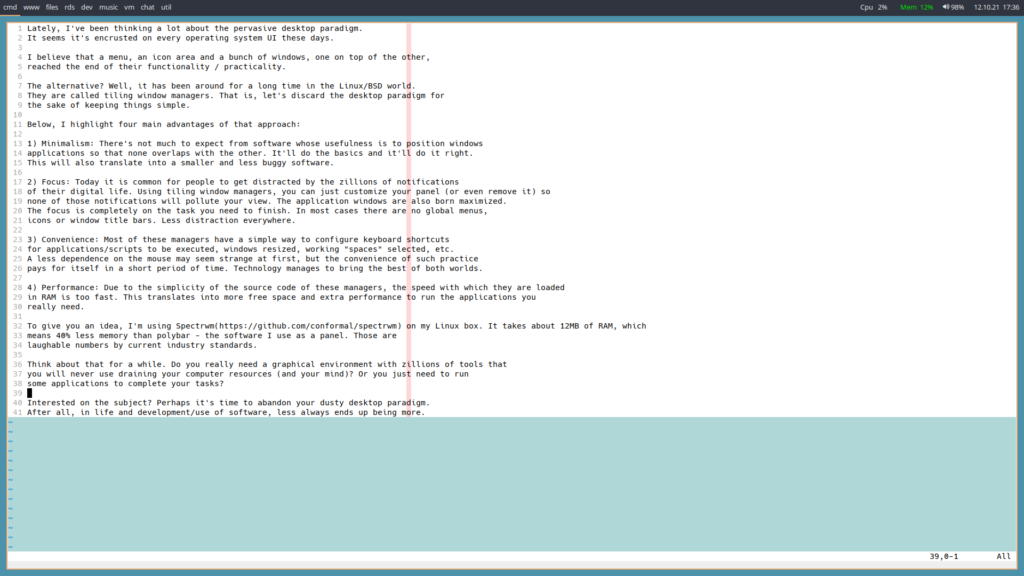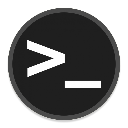Lately, I’ve been thinking a lot about the pervasive desktop paradigm. It seems it’s encrusted on every operating system UI these days.
I believe that a menu, an icon area and a bunch of windows, one on top of the other, reached the end of their functionality / practicality.
The alternative? Well, it has been around for a long time in the Linux/BSD world. They are called tiling window managers. That is, let’s discard the desktop paradigm for the sake of keeping things simple.
Below, I highlight four main advantages of that approach:
1) Minimalism: There’s not much to expect from software whose usefulness is to position windows applications so that none overlaps with the other. It’ll do the basics and it’ll do it right.
This will also translate into a smaller and less buggy software.
2) Focus: Today it is common for people to get distracted by the zillions of notifications of their digital life. Using tiling window managers, you can just customize your panel (or even remove it) so none of those notifications will pollute your screen. The application windows are also born maximized. The focus is completely on the task you need to finish. In most cases there are no global menus, icons or window title bars. Less distraction everywhere.
3) Convenience: Most of these managers have a simple way to configure keyboard shortcuts for applications/scripts to be executed, windows resized, working “spaces” selected, etc. A less dependence on the mouse may seem strange at first, but the convenience of such practice pays for itself in a short period of time. Technology manages to bring the best of both worlds.
4) Performance: Due to the simplicity of the source code of these managers, the speed with which they are loaded in RAM is too fast. This translates into more free space and extra performance to run the applications you really need.
To give you an idea, I’m using Spectrwm on my Linux box. It takes about 12MB of RAM, which means 40% less memory than polybar – the software I use as a panel. Those are laughable numbers by current industry standards.

Think about that for a while. Do you really need a graphical environment with zillions of tools that you will never use draining your computer resources (and your mind)? Or you just need to run some applications to complete your tasks?
Interested on the subject? Perhaps it’s time to abandon your dusty desktop paradigm. After all, in life and development / use of software, less always ends up being more.


